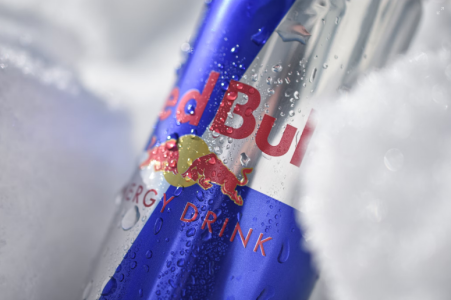Is your favorite drink secretly damaging your organs? Shocking warning after mom's health scare
- Replies 0
When you reach for a cold, fizzy pick-me-up, you probably don’t expect it to come with a side of organ damage.
But for Lucy Parker, a 35-year-old mother of two from Perth, Australia, her daily habit of sipping several cans of Red Bull led to a shocking health scare—and a wake-up call for anyone who loves their energy drinks a little too much.
Lucy’s story is a cautionary tale that’s just as relevant for busy parents and professionals as it is for students and gymgoers.
Energy drinks aren’t just for pulling all-nighters anymore—they’ve quietly become a daily ritual for millions. But as Lucy discovered, that quick fix can come with long-term consequences.
Lucy’s health journey began innocently enough: she’d been experiencing persistent pain in her thighs and went for a routine scan.
Doctors found the cause—a ovarian cyst—but they also uncovered something far more alarming: extreme fat buildup in her liver.
The diagnosis? Non-alcoholic fatty liver disease (NAFLD), a potentially serious condition that can lead to liver failure or cancer if left untreated.
What made Lucy’s case surprising was her overall health. She wasn’t overweight, and she had no prior symptoms.

But her daily habit of drinking three cans of Red Bull—amounting to 81 grams of sugar a day—was silently causing damage.
That’s almost three times the recommended maximum for adults, and the sugar equivalent of 2.5 Mars bars, all in liquid form.
the agency admitted she had been 'addicted,' Lucy said. “If I knew I didn't have a Red Bull in the fridge before I went to bed I would drive out to go and get one or figure out how to get one first thing in the morning.”
Even her children took notice. On a Mother’s Day school project, her daughters listed Red Bull as “Mom’s favorite drink.”
Also read: New study uncovers disturbing link between a household favorite and rising cancer cases
Fatty liver disease is a stealthy condition. In its early stages, it rarely causes noticeable symptoms—no pain, no fatigue, nothing to raise alarm.
That’s why it’s often caught by chance, as it was for Lucy. But as the disease progresses, the liver can become inflamed and scarred, impairing its ability to function.
Eventually, patients may experience swelling, jaundice, fatigue, and in severe cases, full liver failure or liver cancer.
Though often associated with alcohol consumption or obesity, NAFLD is now increasingly found in those with high-sugar diets—even otherwise healthy individuals.
Energy drinks like Red Bull, Monster, and Prime are marketed as productivity boosters, but their labels tell a different story.
Many contain as much as 160mg of caffeine—nearly triple the amount in a standard cup of coffee—plus added taurine, synthetic vitamins, and loads of sugar.
For context, a 250ml cup of coffee contains around 90mg of caffeine. Meanwhile, some energy drinks pack as much sugar as a can of regular soda.
These drinks are an affordable—and dangerously accessible—option for people of all ages.
Lucy also notes that those with ADHD, like herself, may be especially drawn to energy drinks for their calming effects. But the long-term risks are real, and they’re growing.
Also read: This drink linked to cancer—experts urge caution!
After her diagnosis, Lucy made a life-changing decision: she quit energy drinks cold turkey. Just weeks later, follow-up scans showed her liver was already starting to recover.
“My doctor said "whatever you have done between the last session and now is working,’” Lucy recalled. “I just said "I've stopped drinking the Red Bull.’”
She urges others who rely on energy drinks to consider getting a blood test—even if they feel fine.
“I had no pain, no nothing, If someone reading this is drinking the same amount of energy drinks for that period of time I would suggest they get a blood test.”
Lucy’s warning comes as health experts and governments ramp up efforts to combat the growing risks of energy drink overconsumption.
In the UK, the government has proposed banning sales of energy drinks to anyone under 16. Several supermarkets have already adopted voluntary age restrictions.
In 2023 alone, 345 people in the UK died from non-alcoholic fatty liver disease—a number that continues to climb post-pandemic.
If energy drinks are part of your daily routine, it might be time to reevaluate.
Read next: Experts reveal how even a single daily drink could jeopardize your health–What you need to know

Have you or someone you know experienced health issues related to energy drinks? Do you have tips for cutting back or finding better ways to boost energy? Share your thoughts and stories in the comments—we’d love to hear from you.
But for Lucy Parker, a 35-year-old mother of two from Perth, Australia, her daily habit of sipping several cans of Red Bull led to a shocking health scare—and a wake-up call for anyone who loves their energy drinks a little too much.
Lucy’s story is a cautionary tale that’s just as relevant for busy parents and professionals as it is for students and gymgoers.
Energy drinks aren’t just for pulling all-nighters anymore—they’ve quietly become a daily ritual for millions. But as Lucy discovered, that quick fix can come with long-term consequences.
Lucy’s health journey began innocently enough: she’d been experiencing persistent pain in her thighs and went for a routine scan.
Doctors found the cause—a ovarian cyst—but they also uncovered something far more alarming: extreme fat buildup in her liver.
The diagnosis? Non-alcoholic fatty liver disease (NAFLD), a potentially serious condition that can lead to liver failure or cancer if left untreated.
What made Lucy’s case surprising was her overall health. She wasn’t overweight, and she had no prior symptoms.

Your favorite drink might be secretly damaging your organs. Image source: Jesper Brouwers / Unsplash
But her daily habit of drinking three cans of Red Bull—amounting to 81 grams of sugar a day—was silently causing damage.
That’s almost three times the recommended maximum for adults, and the sugar equivalent of 2.5 Mars bars, all in liquid form.
the agency admitted she had been 'addicted,' Lucy said. “If I knew I didn't have a Red Bull in the fridge before I went to bed I would drive out to go and get one or figure out how to get one first thing in the morning.”
Even her children took notice. On a Mother’s Day school project, her daughters listed Red Bull as “Mom’s favorite drink.”
Also read: New study uncovers disturbing link between a household favorite and rising cancer cases
Fatty liver disease is a stealthy condition. In its early stages, it rarely causes noticeable symptoms—no pain, no fatigue, nothing to raise alarm.
That’s why it’s often caught by chance, as it was for Lucy. But as the disease progresses, the liver can become inflamed and scarred, impairing its ability to function.
Eventually, patients may experience swelling, jaundice, fatigue, and in severe cases, full liver failure or liver cancer.
Though often associated with alcohol consumption or obesity, NAFLD is now increasingly found in those with high-sugar diets—even otherwise healthy individuals.
Energy drinks like Red Bull, Monster, and Prime are marketed as productivity boosters, but their labels tell a different story.
Many contain as much as 160mg of caffeine—nearly triple the amount in a standard cup of coffee—plus added taurine, synthetic vitamins, and loads of sugar.
For context, a 250ml cup of coffee contains around 90mg of caffeine. Meanwhile, some energy drinks pack as much sugar as a can of regular soda.
These drinks are an affordable—and dangerously accessible—option for people of all ages.
Lucy also notes that those with ADHD, like herself, may be especially drawn to energy drinks for their calming effects. But the long-term risks are real, and they’re growing.
Also read: This drink linked to cancer—experts urge caution!
After her diagnosis, Lucy made a life-changing decision: she quit energy drinks cold turkey. Just weeks later, follow-up scans showed her liver was already starting to recover.
“My doctor said "whatever you have done between the last session and now is working,’” Lucy recalled. “I just said "I've stopped drinking the Red Bull.’”
She urges others who rely on energy drinks to consider getting a blood test—even if they feel fine.
“I had no pain, no nothing, If someone reading this is drinking the same amount of energy drinks for that period of time I would suggest they get a blood test.”
Lucy’s warning comes as health experts and governments ramp up efforts to combat the growing risks of energy drink overconsumption.
In the UK, the government has proposed banning sales of energy drinks to anyone under 16. Several supermarkets have already adopted voluntary age restrictions.
In 2023 alone, 345 people in the UK died from non-alcoholic fatty liver disease—a number that continues to climb post-pandemic.
If energy drinks are part of your daily routine, it might be time to reevaluate.
Read next: Experts reveal how even a single daily drink could jeopardize your health–What you need to know
Key Takeaways
- A Perth mother-of-two developed non-alcoholic fatty liver disease after drinking three cans of Red Bull daily—consuming nearly triple the recommended sugar intake.
- The liver damage was discovered incidentally during scans for an ovarian cyst; after quitting energy drinks, her liver showed signs of improvement.
- She had no symptoms and is urging others—particularly those with ADHD who may feel “calmed” by energy drinks—to seek medical advice.
- Health experts and UK officials have raised concerns about energy drink consumption, with plans to ban sales to under-16s amid rising liver disease cases.






